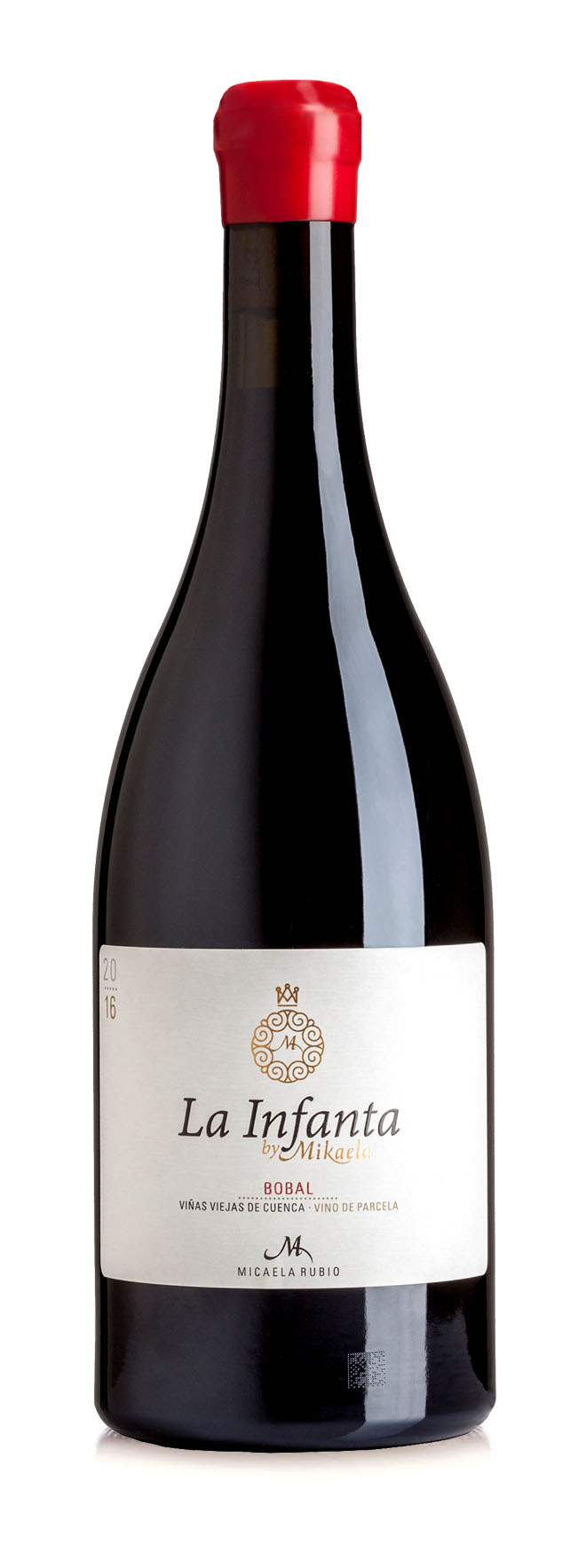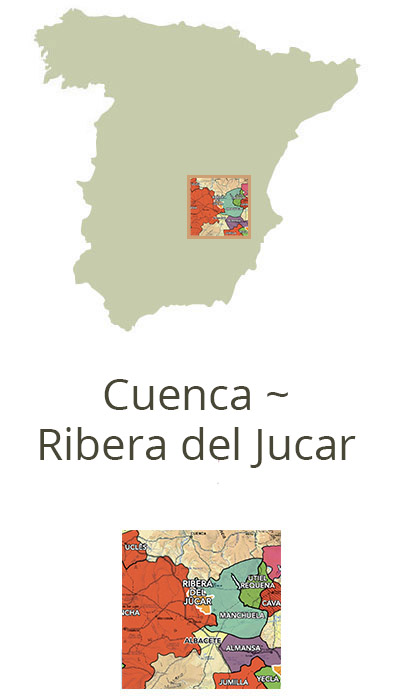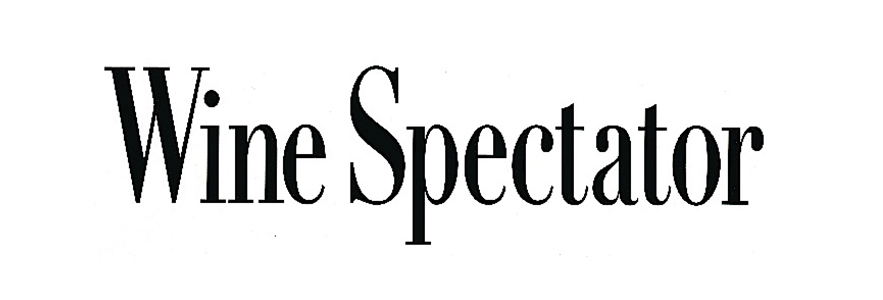Vinos Aurelio García - Micaela Rubio
La Infanta de Mikaela




Downloads
Bottleshot - Shelftalker-2019-Suckling.pdf - Shelftalker-2019-WineAdvocate.pdf - Shelftalker-2020-Suckling.pdf - Shelftalker-2022-WineSpectator.pdf2020 Vintage
94pts

2020 Vintage
92pts

2019 Vintage
92pts

Denominacion de Origen
D.O. Ribera del Jucar
Location
Casas de Benítez in the province of Cuenca
Varietal
Field blended vineyards comprised of 95% Bobal and 5% mixed indigenous varieties including Pardilla, Macabeo, Rojal, and Moravia Agria.
Vineyards
Aurelio García and Micaela Rubio own 6.6Ha of proprietary vineyards south of the city of Cuenca in the villages of Casas de Benítez and Pozoamargo. Parcela La Infanta.
Year(s) Planted
1919
Viticulture
Traditional dry-farmed, biodynamic, manual viticulture. The vines are head-trained and the vineyards are plowed by horse.
Soils
La Infanta is a site with heavily eroded soils, and as a result, the 30CM of the surface of the soil is composed of large smooth stones, clay, and sand. The mother rock, which is laminated limestone, is immediately below the surface. This allows the roots of the vine to penetrate the mother rock.
Climate
Continental Mediterranean climate characterized by long and cold winters followed by short and hot summers, with drastic temperature changes between day and night due to the altitude. 500-650L/M2 precipitation per year.
Winemaking
After a rigorous selection of the clusters, 100% whole clusters are transferred to 1,000L stainless steel tank. A pigeage is carried out to lightly break up the clusters, which is followed by a 3-4 day pre-fermentative maceration at low temperatures. Fermentation begins spontaneously, and maceration is kept to an absolute minimum, "steeping" the wine with the whole clusters. After fermentation the wine undergoes a gentle press in a vertical basket press.
Aging
Malolactic and 24 months of aging are carried out in a new 500L French oak puncheon and 3 54L glass carboys.
Comments
These vineyards, which are located in the villages of Pozoamargo and Casas de Benítez, are located in the southeast of the province of Cuenca, in the historic basin of the Rio Jucar. The soils of large rounded stones owe their origins to this historic river, and create one of the most unique and differentiated terroirs in the vast diversity of Spanish vineyards. Thankfully, this area was also spared from the mass uprooting and commercialization of Spanish viticulture in the 60's and 70's, and as a result, has a tremendous diversity of field blended microparcels planted to Bobal and myriad other indigenous varieties. This is a little known area with a rich viticultural history, but climactically and geographically is the closest approximation in Spanish viticulture to the vineyards of Châteauneuf-du-Pape.